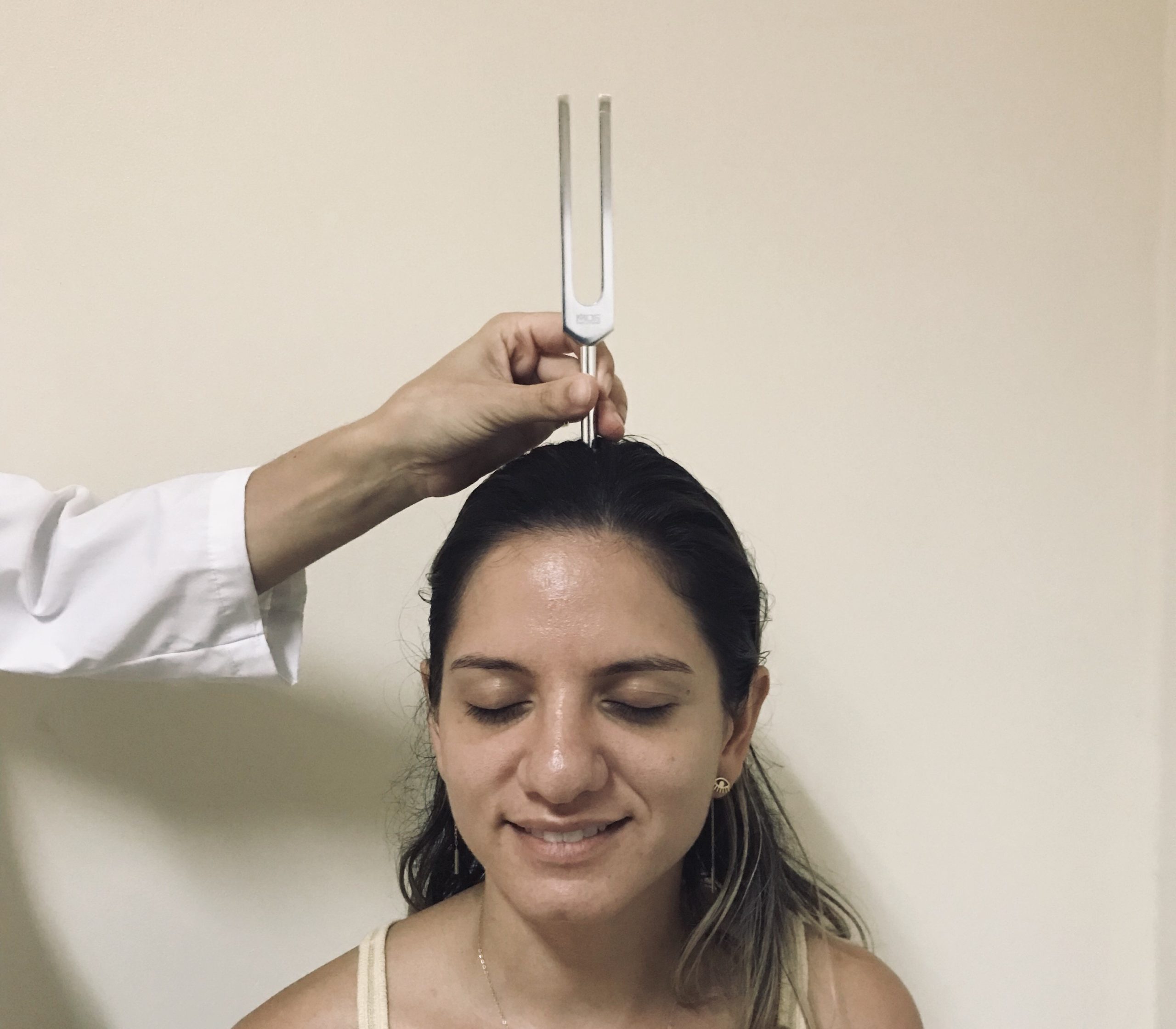Applied HEENT Exam
After the advanced HEENT workshop, you should be able to:
- Perform the Immersion HEENT exam and interpret your findings.
- Perform additional problem focused maneuvers:
- Weber and Rinne tests to differentiate conductive and sensorineural hearing loss.
- Palpate the sinuses in suspected sinusitis
- Inspect the nasal mucosa
- Perform a problem focused eye exam
- Perform a problem focused exam for a patient with hearing loss
Weber and Rinne tests
The Weber and Rinne tests are used to differentiate conductive and sensorineural hearing loss. Conductive hearing loss is caused by problems with the external or middle ear, which amplify and conduct sound to the inner ear. Sensorineural hearing loss is caused by problems with the cochlea, auditory nerve, or brain. Differentiating them can be clinically useful – conductive hearing loss is often caused by cerumen impaction, which can be treated in the clinic, while sudden onset of sensorineural hearing loss suggests the need for an urgent ENT referral.
The Weber test is performed on patients with asymmetric hearing. Strike the 512 Hz tuning fork against your knee to make it vibrate, then place it on your patient’s head in the midline. The bones of the skull will conduct the sound to the inner ears. Ask your patient which ear hears the sound best.

- If the ‘bad’ ear hears the sound better, there is conductive hearing loss in that ear. The relative lack of sound conducted from the outside world to the inner ear makes the tuning fork sound louder – try it on yourself by blocking one ear with your finger.
- If the ‘good’ ear hears the sound better, it means the ‘bad’ ear is affected by sensorineural hearing loss.
For the Rinne test, the vibrating tuning fork is placed on the mastoid process, testing conduction of sound through bone. It is then held just lateral to the ear testing conduction of sound through air. The patient is asked which position produces the loudest sound.
- Normally, air conduction should be better than bone conduction.
- In sensorineural hearing loss, air conduction is also better than bone conduction.
- In conductive hearing loss, bone conduction is better than air conduction.
Inspect the nasal mucosa
If you suspect sinusitis, allergies, or nasal polyps, inspect the inside of the nose with the otoscope. Place the largest available speculum that will comfortably fit inside the nostril. Gently elevate the tip of the nose to better see the nasal cavity. Direct the speculum posteriorly and superiorly as you inspect the nasal cavity. Pale nasal mucosa suggests allergies as the cause of post-nasal drip. In sinusitis, you may be able to see purulent nasal secretions.
Palpate the sinuses in suspected sinusitis
In suspected sinusitis, many providers palpate the paranasal sinuses above the eyes (frontal sinuses) and over the malar eminences (maxillary sinuses). Sinus tenderness is a sensitive but not a specific finding of acute bacterial sinusitis.
JAMA Rational Clinical Exam found that three features of a patient’s history are predictive of bacterial sinusitis if present: maxillary toothache, report of colored nasal secretions, and poor response to decongestants. Two physical exam findings are also helpful – purulent nasal secretions and abnormal sinus transillumination (this maneuver is beyond the scope of FCM). The presence of four or five of these features strongly supports a diagnosis of sinusitis, while the absence of all argues strongly against it.
Resources & references
From Evidence Based Physical Diagnosis:
